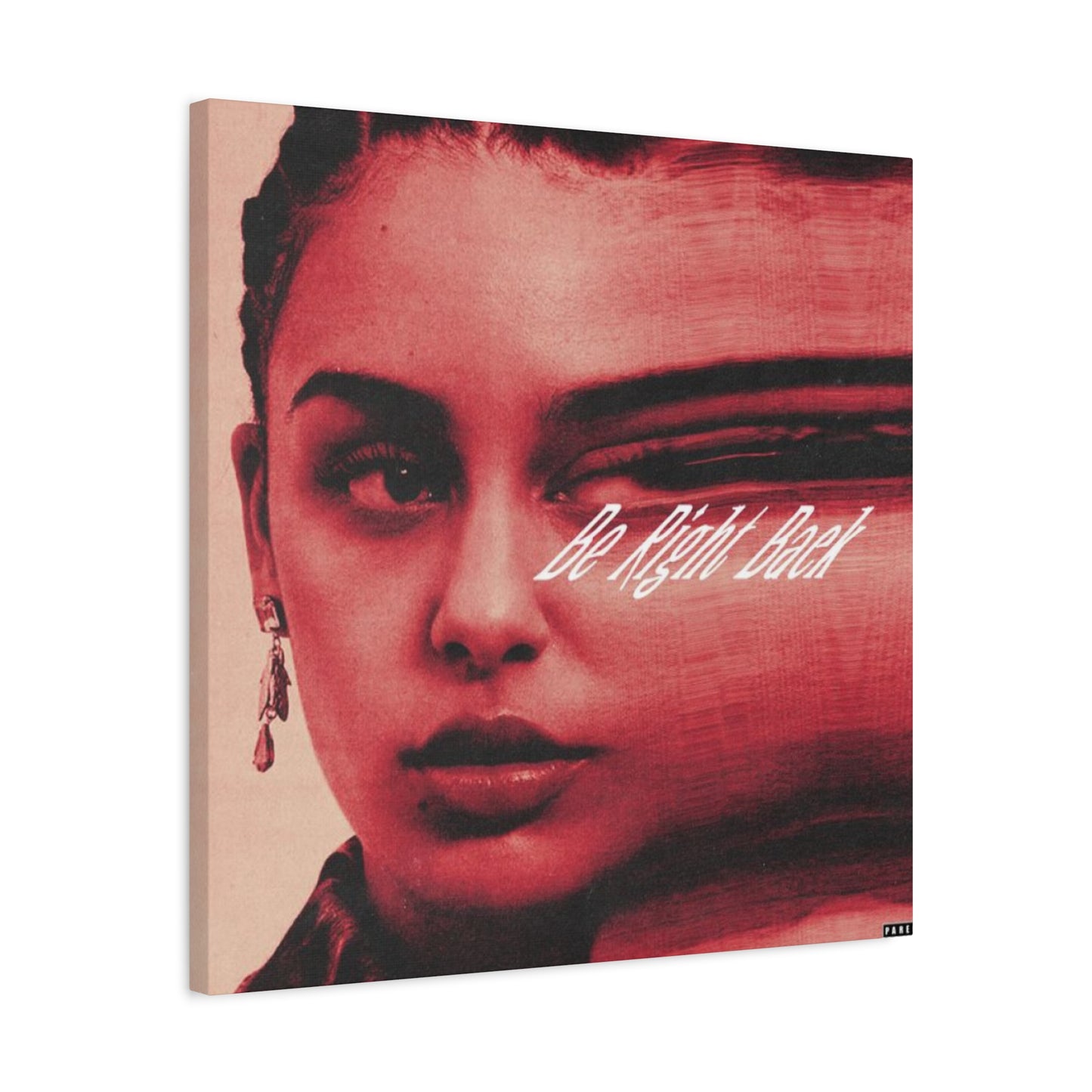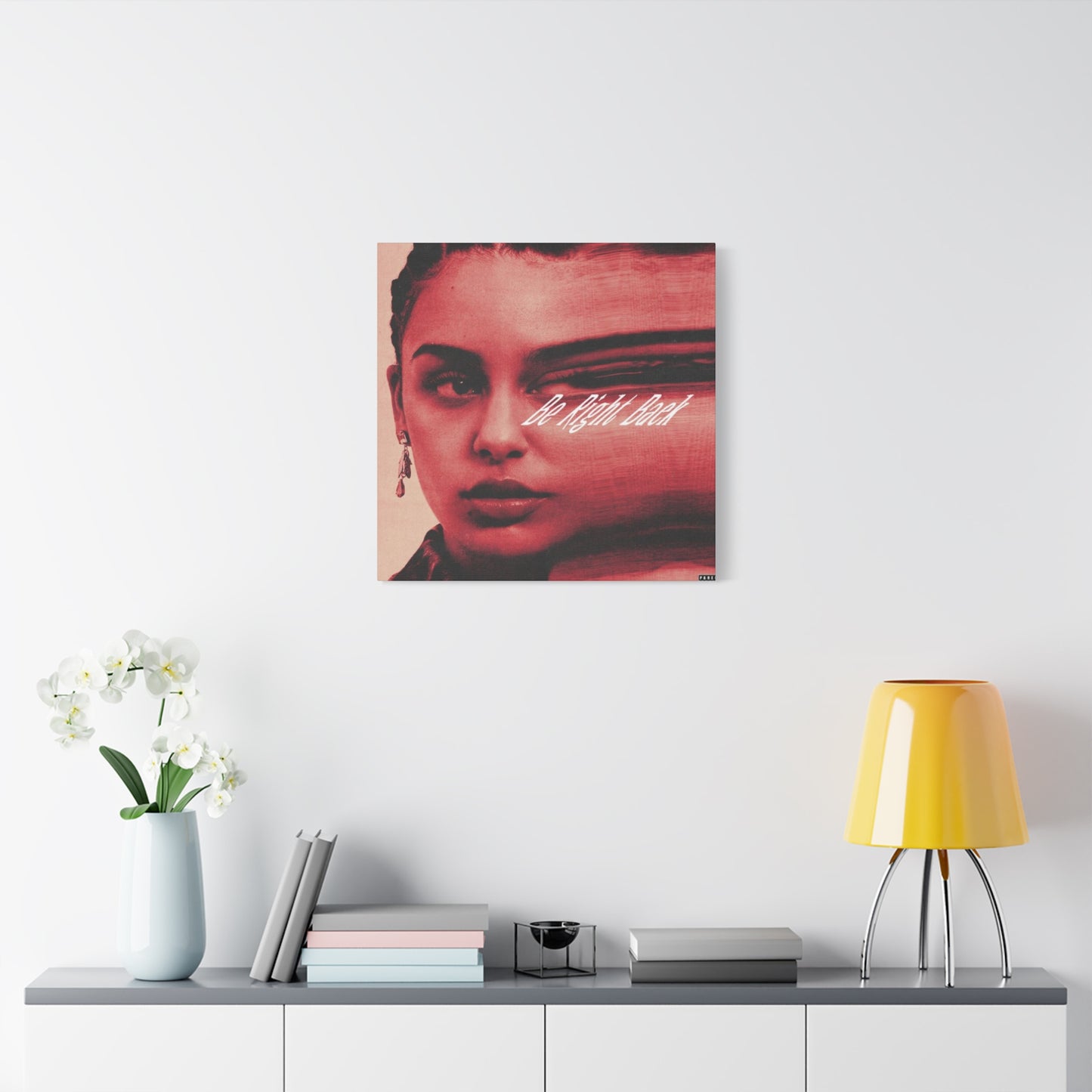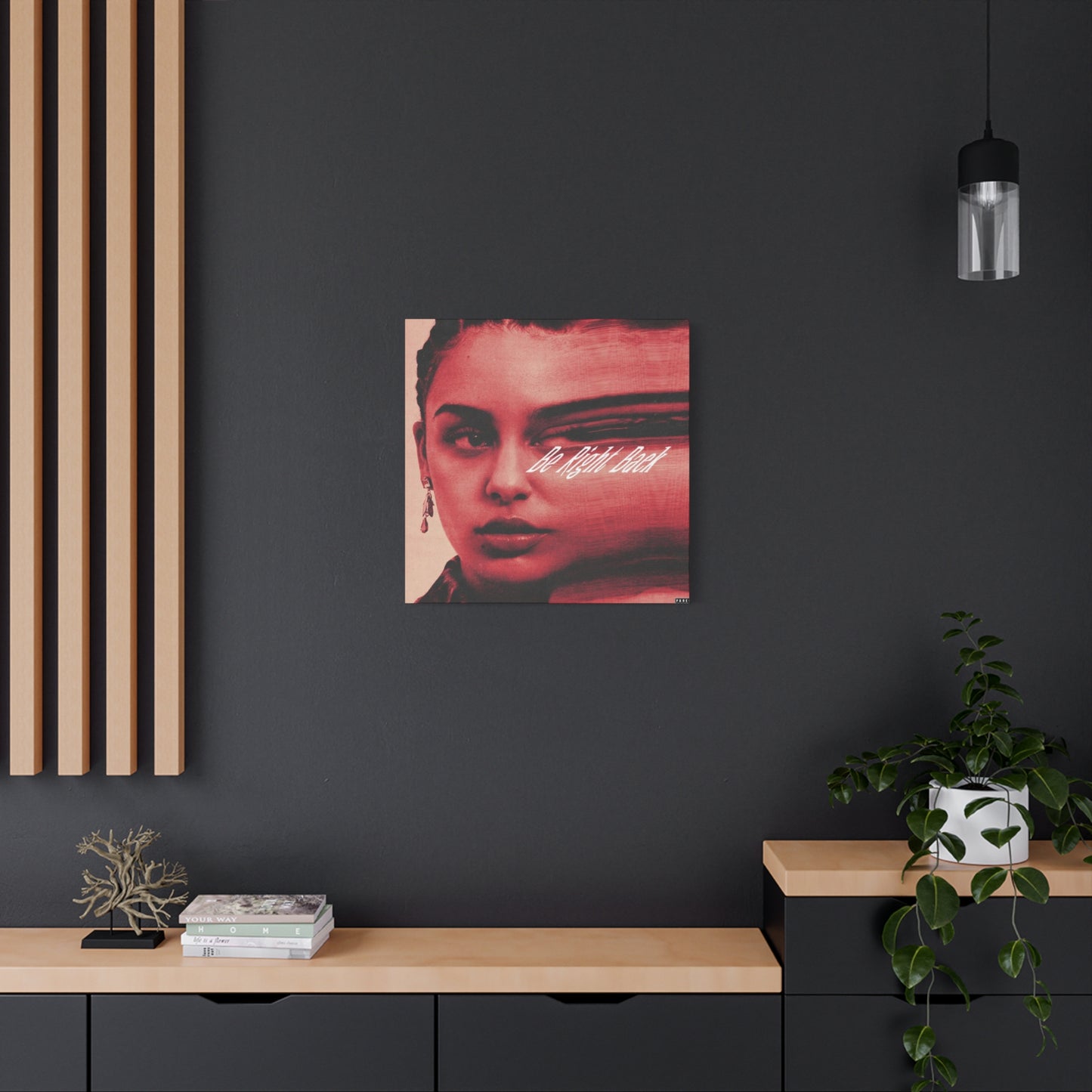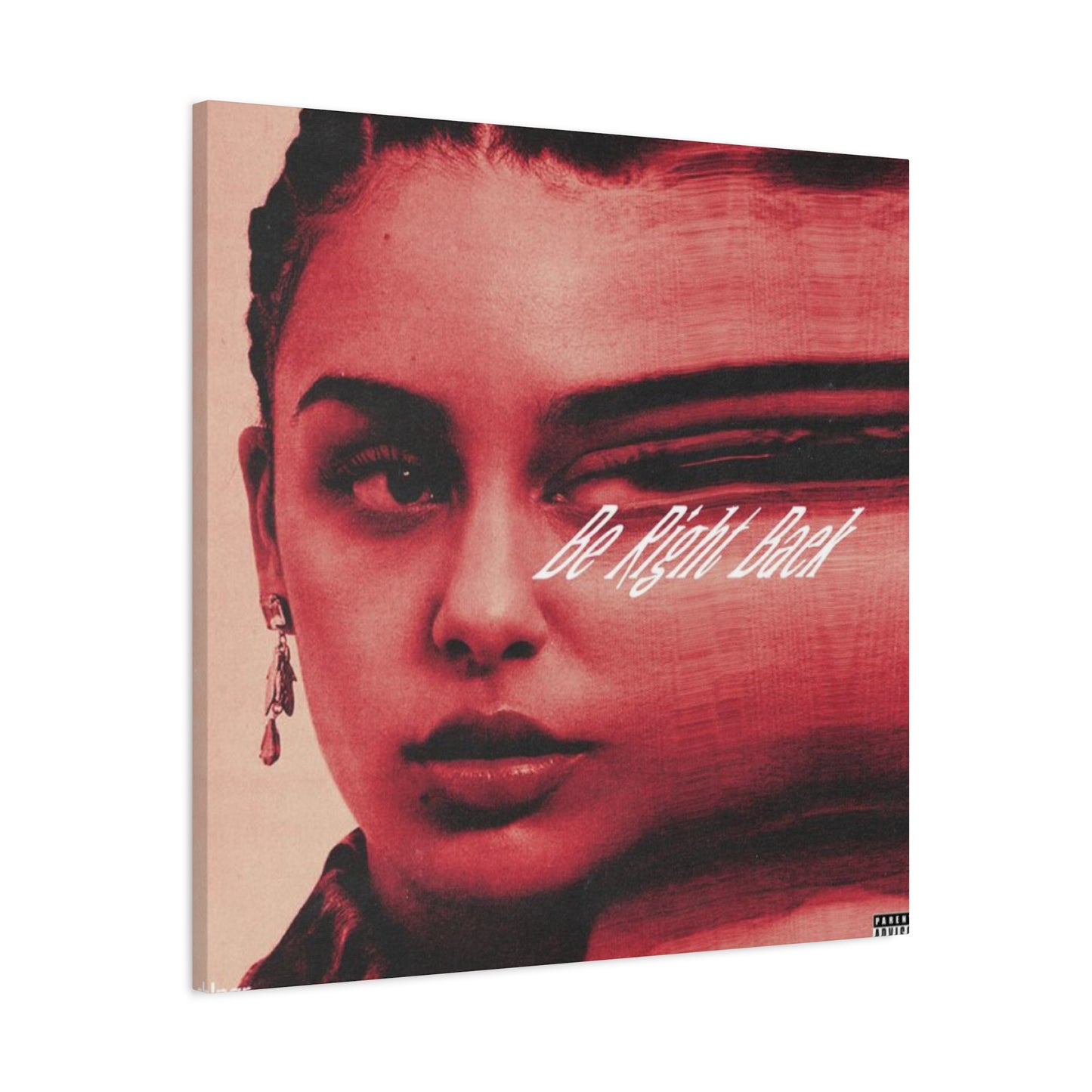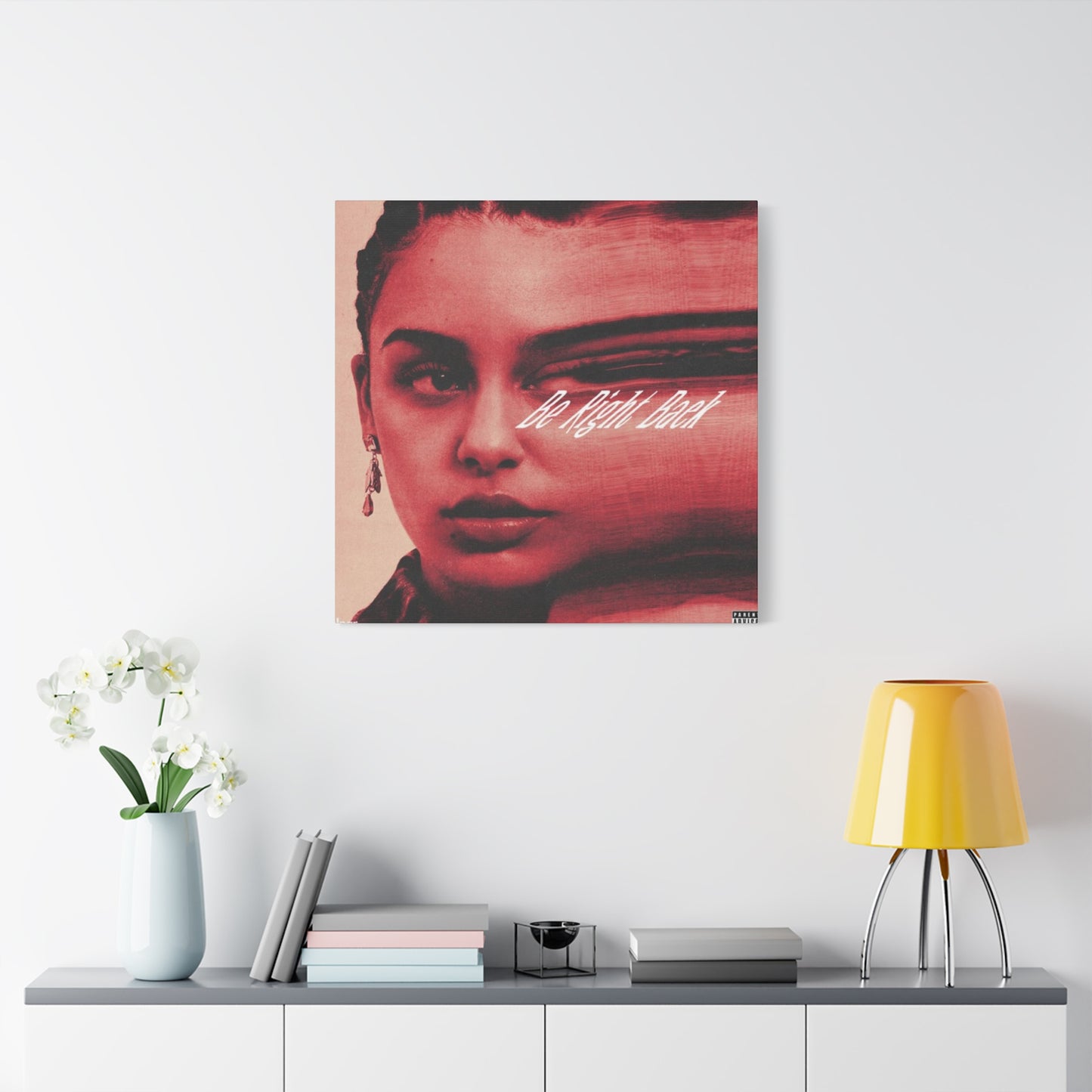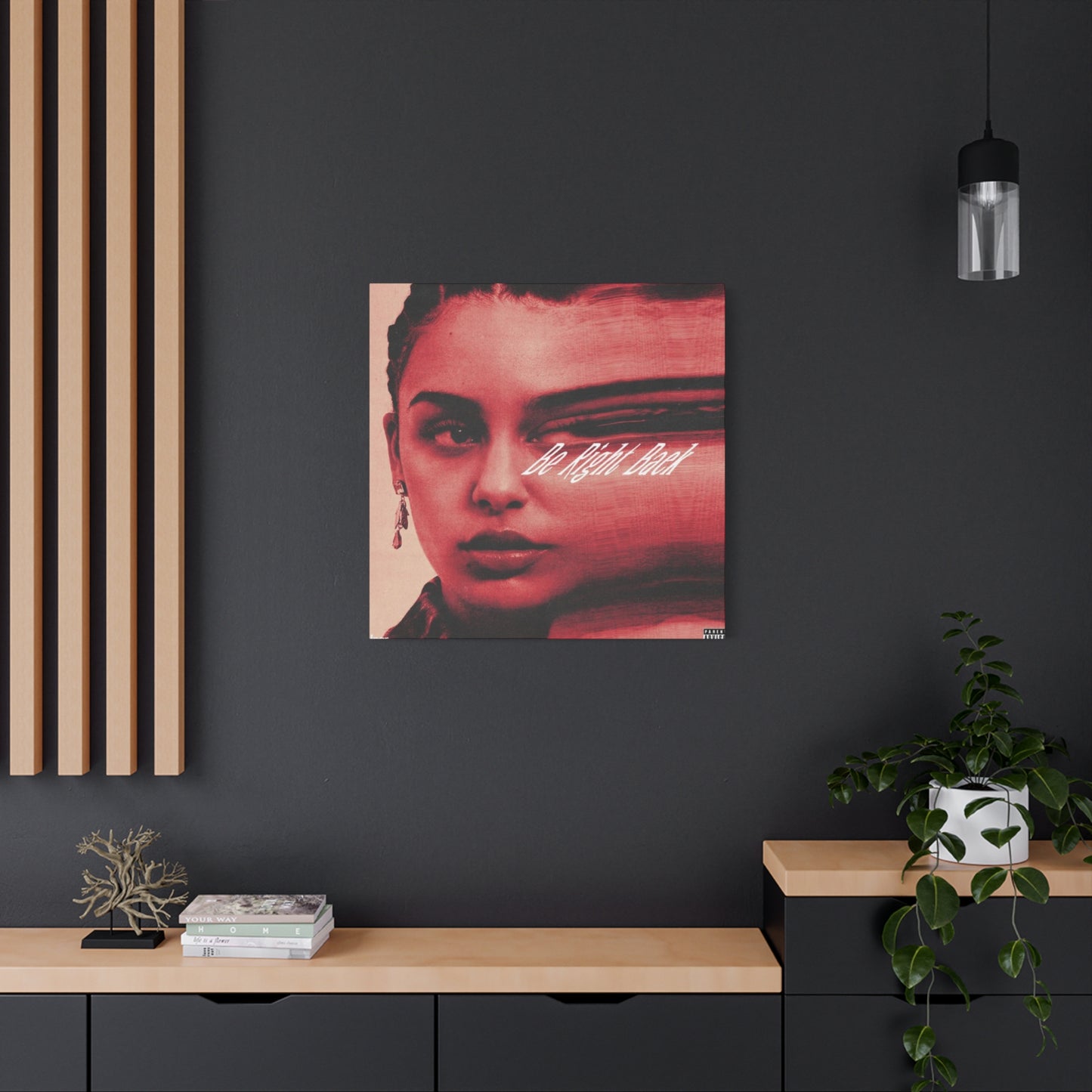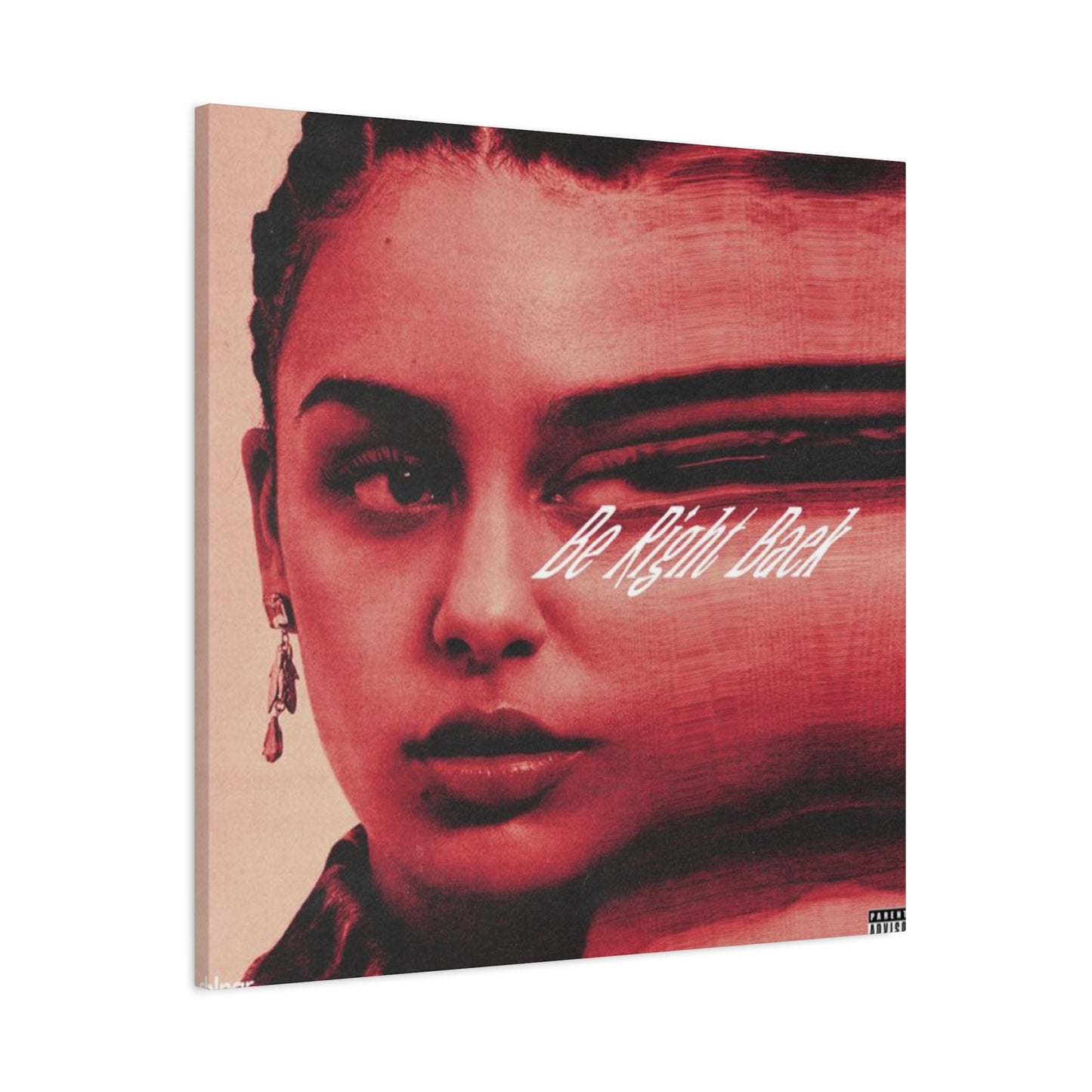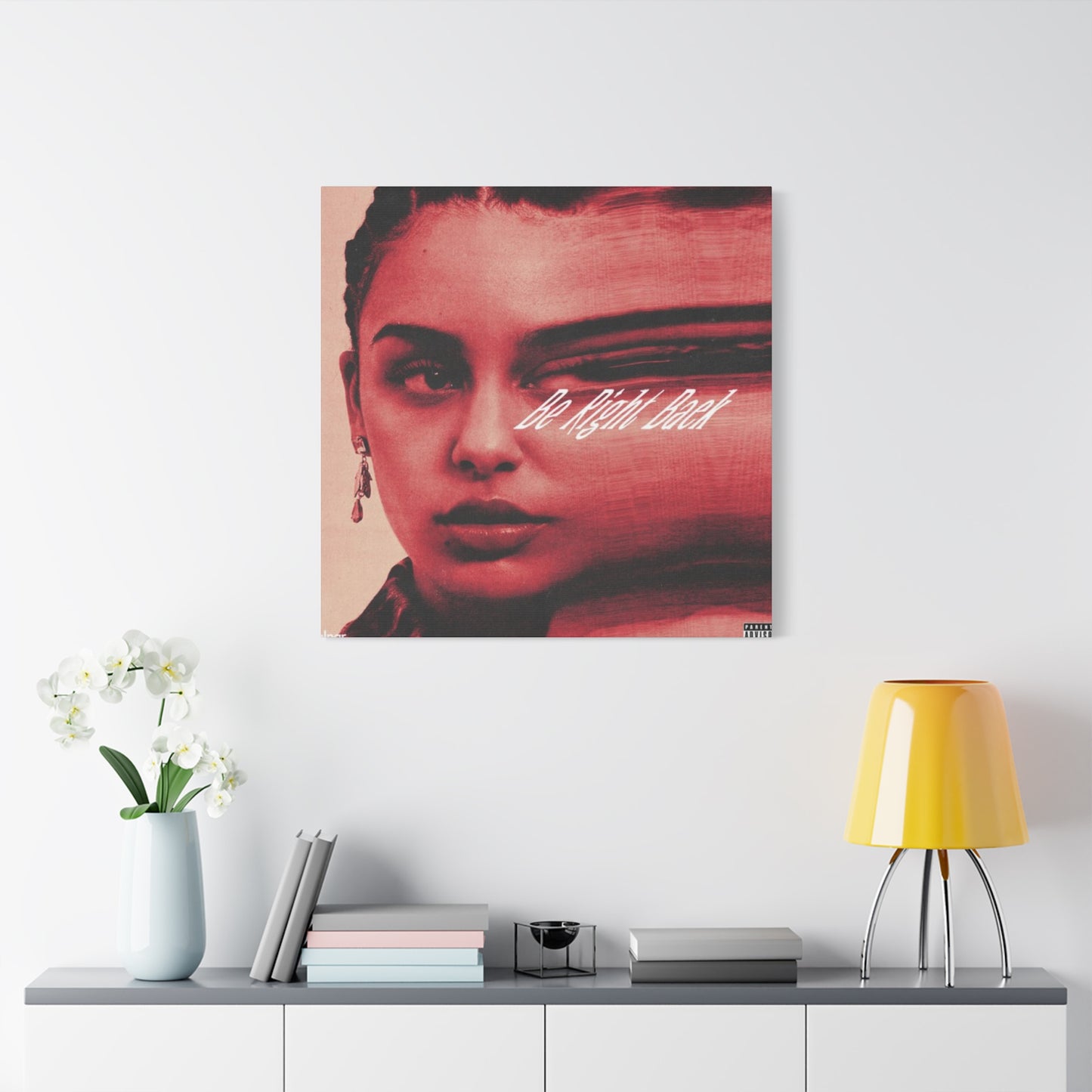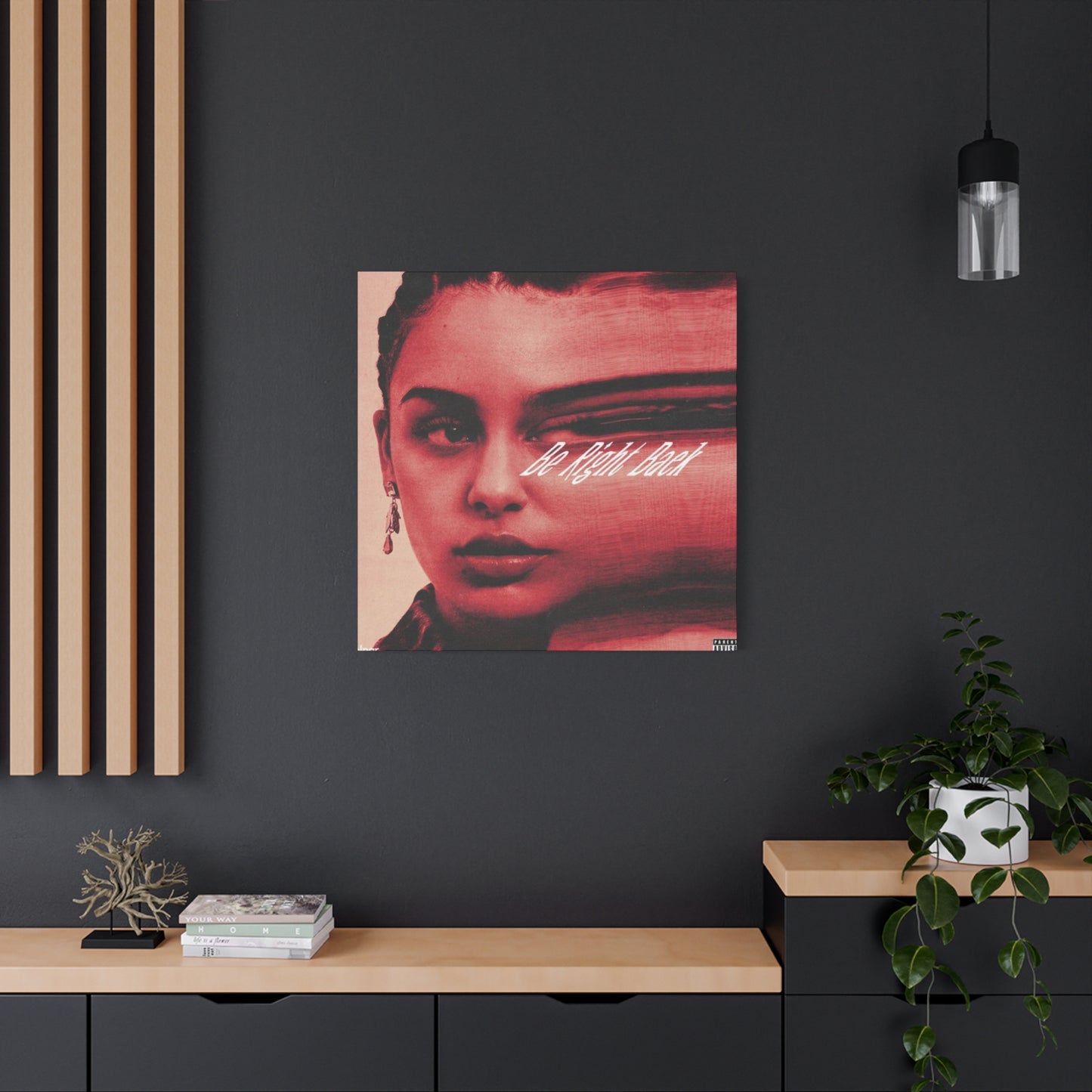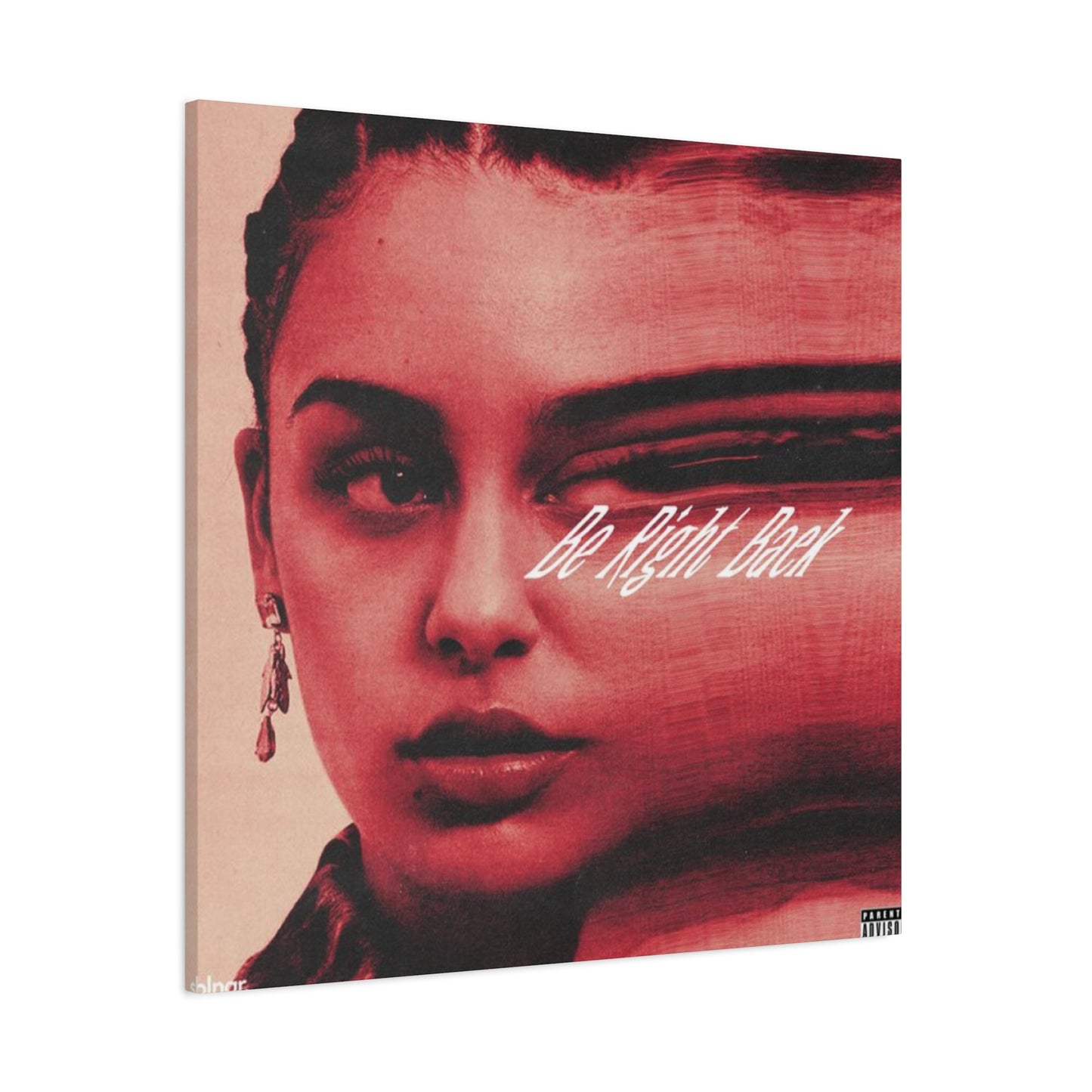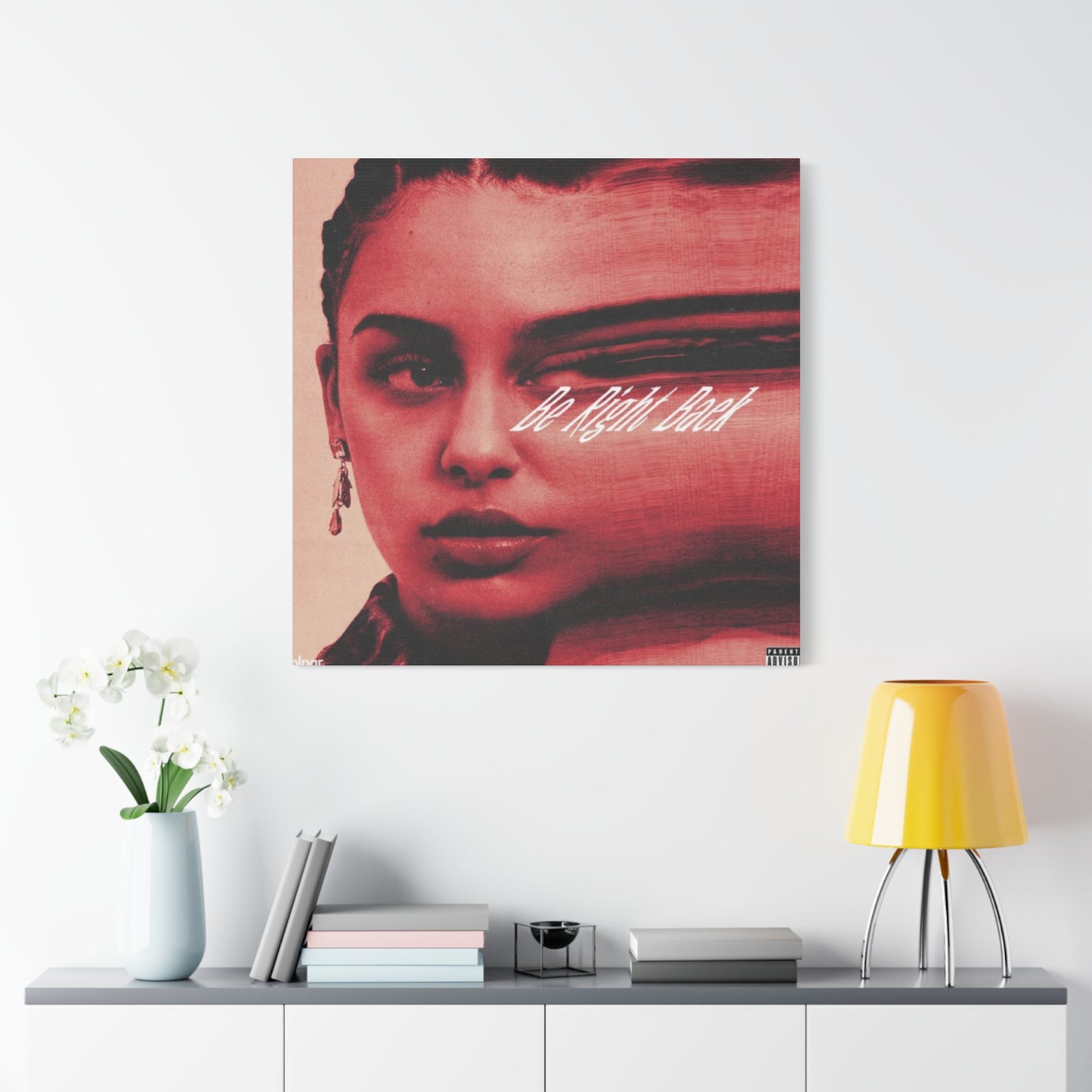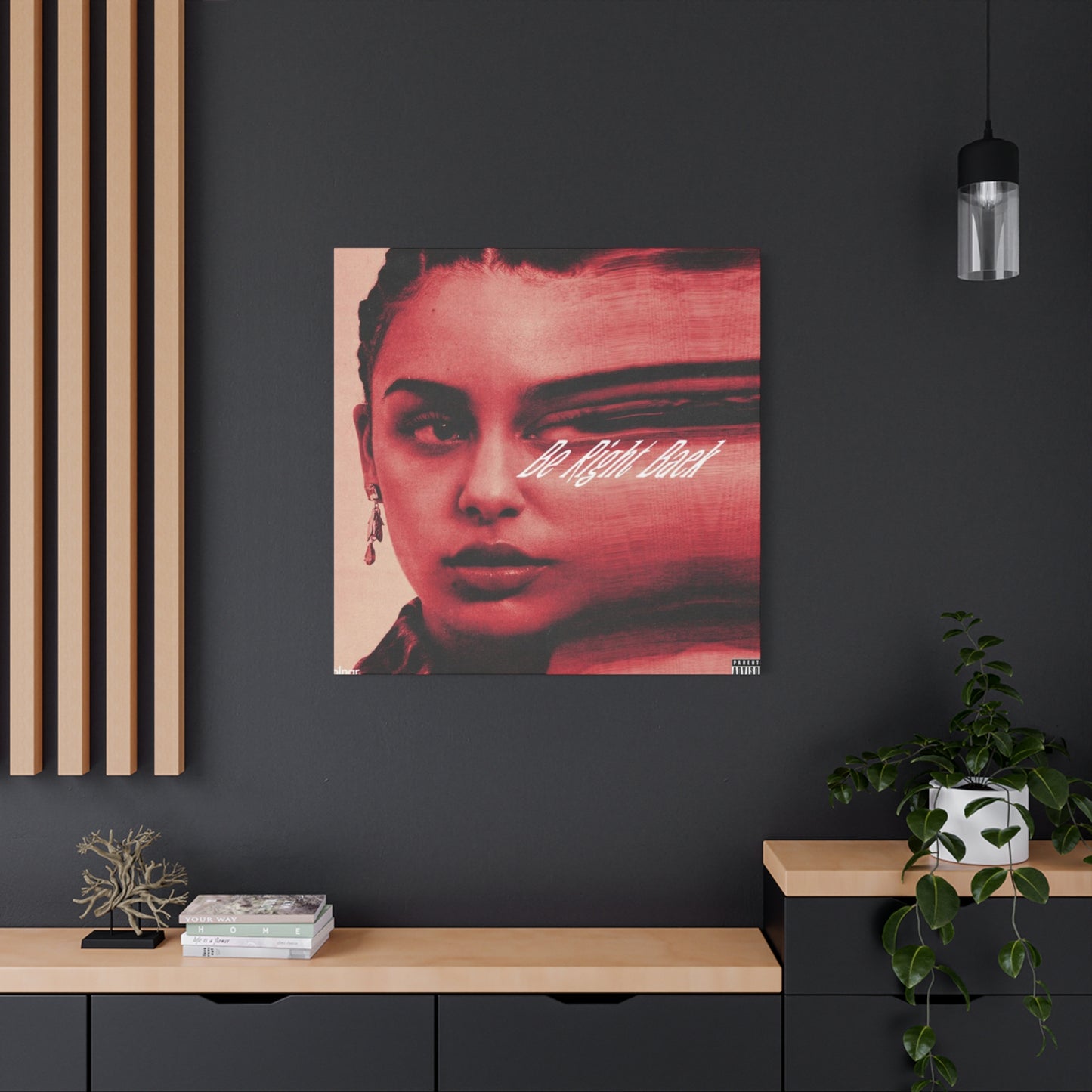Exploring the Creativity Behind “Be Right Back” Mixed Media Wall Art
The haunting narrative of Black Mirror's "Be Right Back" episode has transcended television screens to inspire a remarkable movement in contemporary art and design. This powerful story, which explores themes of artificial intelligence, digital resurrection, and human grief, has become a catalyst for artistic expression across multiple mediums. Artists worldwide have found themselves drawn to the episode's complex emotional landscape, creating works that examine our relationship with technology, memory, and loss in the digital age.
The episode's central premise - the recreation of a deceased person through artificial intelligence and digital communication - resonates deeply with contemporary anxieties about technology's role in human relationships. As we navigate an increasingly connected world where digital presence often feels as real as physical presence, the boundaries between authentic human connection and artificial simulation become increasingly blurred. This ambiguity provides fertile ground for artistic exploration, encouraging creators to examine what makes us fundamentally human in an age of advanced technology.
Contemporary artists have embraced these themes, producing works that range from traditional paintings and sculptures to cutting-edge digital installations and virtual reality experiences. The visual language of "Be Right Back" has become a recognizable aesthetic in modern art, characterized by its exploration of emptiness, longing, and the uncanny valley between human and artificial intelligence. These artistic interpretations serve not only as aesthetic objects but as profound commentaries on our evolving relationship with technology and mortality.
The influence of this narrative extends beyond individual artistic works to encompass entire movements in digital art, interactive media, and conceptual installation pieces. Museums and galleries worldwide have begun to recognize the cultural significance of these technology-inspired artworks, incorporating them into major exhibitions that explore the intersection of human experience and digital innovation. This growing recognition has established "Be Right Back" as more than just entertainment - it has become a cultural touchstone for discussions about artificial intelligence, grief, and the nature of human consciousness.
Art inspired by this episode often grapples with questions that extend far beyond the original narrative. How do we maintain authentic emotional connections in a world where artificial intelligence can simulate human behavior with increasing accuracy? What constitutes genuine memory when digital records can preserve and replay our most intimate moments? These questions drive artistic exploration that challenges viewers to examine their own relationships with technology and consider the implications of our increasingly digital existence.
The democratization of digital art tools has enabled countless creators to engage with these themes, producing works that range from professional gallery pieces to grassroots social media art that reaches global audiences. This accessibility has fostered a diverse community of artists who share a common interest in exploring the emotional and philosophical implications of advanced technology. The result is a rich tapestry of artistic expression that continues to evolve as technology itself advances and our understanding of artificial intelligence deepens.
Wall Art Concepts Inspired by Digital Mourning
The concept of transforming digital grief into physical wall art represents a fascinating intersection of traditional artistic expression and contemporary technological anxiety. Artists working in this space have developed sophisticated visual languages that capture the essence of digital mourning while creating compelling aesthetic experiences for viewers. These works often feature stark contrasts between organic and digital elements, exploring the tension between human emotion and artificial simulation that lies at the heart of the "Be Right Back" narrative.
Contemporary wall art inspired by digital mourning frequently employs minimalist design principles to create maximum emotional impact. Clean lines, muted color palettes, and strategic use of negative space allow viewers to project their own experiences with loss and technology onto the work. This approach recognizes that grief is a deeply personal experience, and effective art must provide space for individual interpretation while maintaining a coherent thematic foundation.
Many artists in this genre incorporate elements of glitch aesthetics, using digital distortion and fragmentation to represent the imperfect nature of artificial recreation. These visual techniques serve as metaphors for the gaps between authentic human experience and its digital simulation, highlighting the uncanny valley that exists between real and artificial consciousness. The deliberate introduction of digital artifacts and errors into otherwise pristine compositions creates a sense of unease that mirrors the emotional discomfort of interacting with artificial versions of deceased loved ones.
Color psychology plays a crucial role in these artistic interpretations, with many artists favoring cool blues and grays that evoke the cold, technological nature of digital communication. However, subtle warmth is often introduced through amber highlights or soft flesh tones, representing the persistent humanity that underlies our technological interactions. This careful balance of warm and cold elements creates visual tension that reflects the emotional complexity of the source material.
Typography and text elements frequently appear in these works, often featuring fragments of digital conversations, error messages, or user interface elements that have become part of our daily technological experience. These textual components serve multiple functions: they ground the work in recognizable digital contexts while also providing entry points for viewers who may not immediately grasp the more abstract visual elements. The choice of fonts, spacing, and arrangement of text becomes an artistic decision that contributes to the overall emotional impact of the piece.
Abstract geometric patterns often represent data flows, neural networks, or the structured nature of artificial intelligence systems. These elements are typically rendered in ways that suggest both precision and instability, reflecting the advanced capabilities of AI systems while acknowledging their fundamental limitations in replicating human consciousness. The interplay between rigid geometric structures and more organic, flowing forms creates visual metaphors for the ongoing dialogue between human intuition and artificial logic.
Installation considerations for these works often involve lighting design that enhances the technological themes while creating appropriate viewing environments. LED lighting systems, projection mapping, and interactive elements can transform static wall art into dynamic experiences that respond to viewer presence or environmental conditions. These technological enhancements serve not merely as spectacle but as integral components of the artistic statement, demonstrating how technology can enhance rather than diminish human emotional experience when thoughtfully applied.
The scale of these works varies considerably, from intimate pieces designed for personal reflection to large-scale installations intended for public spaces. Smaller works often focus on detailed technical elements and subtle emotional nuances, encouraging close examination and contemplation. Larger installations have the opportunity to create immersive environments that surround viewers with the themes and aesthetics of digital mourning, potentially triggering more profound emotional responses and encouraging deeper engagement with the underlying concepts.
Material choices in these works often reflect the tension between digital and physical existence. Traditional materials like canvas and paint are frequently combined with modern elements such as LED displays, printed circuit boards, or smartphone screens to create hybrid objects that exist simultaneously in physical and digital realms. This material consciousness reflects the broader themes of the work while also making statements about the increasing integration of technology into all aspects of human life.
Fan-Created Artistic Interpretations
The passionate fanbase surrounding Black Mirror's "Be Right Back" episode has generated an extraordinary body of artistic work that demonstrates the deep cultural impact of this narrative. Fan artists have approached the source material from countless angles, creating interpretations that range from direct scene recreations to abstract conceptual pieces that explore the episode's philosophical implications. This grassroots artistic movement represents a democratization of art creation, enabled by digital tools and online platforms that allow artists to share their work with global audiences.
Social media platforms have become galleries for fan art inspired by the episode, with artists using hashtags and community groups to connect with others who share their interest in these themes. The immediacy of digital sharing allows for rapid iteration and response, creating ongoing conversations between artists and viewers that inform and influence subsequent artistic creation. This dynamic interaction between creator and audience represents a new model of artistic development that differs significantly from traditional gallery-based art distribution.
Digital illustration has become the dominant medium for fan art in this genre, partly due to the thematic appropriateness of using digital tools to explore digital themes. Artists working in programs like Photoshop, Procreate, and various 3D modeling applications have developed sophisticated techniques for rendering the cold, technological aesthetic of the episode while maintaining the emotional warmth necessary for effective artistic communication. The learning curve associated with these tools has created communities of artists who share techniques and provide mutual support, fostering artistic growth and innovation.
Character studies represent a significant portion of fan art in this category, with artists exploring the emotional states and psychological development of the episode's protagonists. These works often focus on subtle facial expressions and body language that convey the complex emotions associated with grief, hope, and disappointment. The challenge of depicting artificial consciousness through human-appearing characters has led to innovative artistic techniques that suggest the presence of something not quite human beneath familiar appearances.
Environmental art inspired by the episode often focuses on the domestic spaces where much of the emotional action takes place. These works explore how technology integrates into intimate personal spaces and how the presence of artificial consciousness might alter the feeling and function of familiar environments. Artists frequently employ lighting and atmospheric effects to suggest the presence of something otherworldly within mundane settings, creating a sense of the uncanny that permeates the source material.
Conceptual fan art often moves beyond direct representation to explore the broader implications of the episode's themes. These works might visualize data flows, neural networks, or abstract representations of consciousness that speak to the technical and philosophical foundations of the narrative. Such pieces require viewers to engage more actively with the work, bringing their own understanding of technology and consciousness to the interpretation process.
Mixed media approaches have allowed fan artists to incorporate physical elements into their digital creations, blurring the boundaries between virtual and real in ways that mirror the episode's thematic concerns. Artists might combine traditional drawing or painting techniques with digital manipulation, 3D printing, or augmented reality elements to create works that exist simultaneously in multiple dimensional spaces. This approach reflects the increasingly hybrid nature of contemporary existence, where digital and physical experiences are seamlessly integrated.
Collaborative fan art projects have emerged as artists work together to create comprehensive visual interpretations of the episode's world. These collaborations might involve multiple artists contributing different elements to a single piece, or coordinated series of works that explore different aspects of the narrative from various artistic perspectives. The collaborative approach reflects the social nature of both art creation and digital communication, highlighting how technology can facilitate creative cooperation across geographical boundaries.
Animation and motion graphics represent growing areas of fan art creation, with artists using tools like After Effects and Blender to create moving images that explore temporal aspects of the narrative. These works can depict the gradual development of artificial consciousness, the deterioration of digital systems, or the emotional progression of characters over time. The temporal dimension available in animated works provides opportunities for storytelling that static images cannot achieve.
Interactive fan art has begun to emerge as artists experiment with web-based technologies, virtual reality, and augmented reality platforms. These works invite viewer participation, allowing audiences to experience aspects of the episode's world through direct interaction with artificial intelligence systems or simulated communication interfaces. Such pieces push the boundaries of what constitutes art while providing powerful experiential learning opportunities about the implications of advanced AI systems.
Digital Art Techniques for Technology-Based Themes
The creation of digital art inspired by technological themes requires mastery of specialized techniques that effectively communicate the unique aesthetic and emotional qualities associated with artificial intelligence, digital communication, and virtual existence. Artists working in this domain have developed sophisticated approaches that combine traditional artistic principles with cutting-edge digital tools to create compelling visual experiences that resonate with contemporary audiences increasingly familiar with advanced technology interfaces.
Glitch art techniques have become fundamental to creating authentic technological aesthetics in digital artwork. These methods involve the deliberate introduction of digital artifacts, compression errors, and system malfunctions into otherwise pristine compositions. Artists achieve these effects through various means, including data manipulation, software exploitation, and deliberate corruption of digital files. The resulting visual distortions serve as metaphors for the imperfect nature of artificial intelligence and the gaps that exist between human consciousness and its digital simulation.
Procedural generation techniques allow artists to create complex, seemingly organic patterns through algorithmic processes, reflecting the computational nature of artificial intelligence systems. These methods involve writing code or using specialized software to generate visual elements based on mathematical formulas, rule systems, or randomization algorithms. The resulting patterns often suggest neural networks, data flows, or other abstract representations of artificial consciousness while maintaining visual interest through their mathematical precision and infinite variation.
3D modeling and rendering techniques have become essential tools for creating convincing technological environments and interfaces that reflect the clean, minimalist aesthetic often associated with advanced AI systems. Artists use software like Blender, Cinema 4D, or Maya to construct virtual spaces that feel simultaneously futuristic and familiar, often incorporating holographic displays, transparent interfaces, and impossibly clean architectural elements that suggest advanced technological capabilities.
Particle systems and simulation techniques enable artists to visualize abstract concepts like data transfer, neural activity, or consciousness itself through dynamic, moving elements. These systems can simulate everything from digital rain and flowing information streams to complex network visualizations that suggest the interconnected nature of modern digital systems. The temporal aspect of these simulations adds depth and engagement to static compositions while reinforcing themes of constant change and evolution inherent in technological progress.
Color grading and post-processing techniques borrowed from cinematography have become crucial for establishing the appropriate mood and atmosphere in technology-themed digital art. Artists often employ cool color palettes dominated by blues and teals, with strategic use of warmer accents to create visual hierarchy and emotional focus. Advanced color correction techniques allow for precise control over the emotional impact of different areas within a composition, guiding viewer attention and reinforcing thematic elements.
Typography integration techniques have evolved to accommodate the increasing importance of text and interface elements in contemporary digital experience. Artists must understand how to effectively incorporate various fonts, user interface elements, and text layouts that feel authentic to actual software and hardware interfaces while serving the artistic needs of the composition. This often involves creating custom fonts or modifying existing typefaces to achieve the perfect balance between functionality and aesthetic appeal.
Composite imaging techniques allow artists to seamlessly blend multiple source elements, creating complex scenes that might be impossible to achieve through single-shot photography or traditional illustration. These skills are particularly important when creating works that combine human elements with artificial or technological components, requiring precise masking, lighting matching, and perspective correction to achieve convincing results.
Texture creation and surface detailing techniques have become increasingly sophisticated as artists strive to achieve photorealistic rendering of technological objects and environments. This involves understanding how light interacts with various materials commonly found in high-tech environments, from brushed metal and glossy plastics to holographic displays and fiber optic elements. The ability to create convincing material surfaces contributes significantly to the overall believability and impact of technology-themed artwork.
Motion design principles have become essential even for static artwork, as artists must understand how elements within their compositions suggest movement and change over time. This involves careful consideration of leading lines, implied motion vectors, and dynamic balance that creates the impression of ongoing activity and evolution within the frame. These principles help communicate the constant change and development inherent in technological systems.
Interactive design considerations have become increasingly important as digital art platforms evolve to support user interaction and responsive elements. Artists must understand how to create works that can adapt to user input, environmental changes, or temporal evolution while maintaining their artistic integrity and thematic consistency. This requires knowledge of programming languages, web technologies, and emerging platforms like augmented and virtual reality systems.
Artificial Intelligence as Artistic Subject Matter
The representation of artificial intelligence in visual art presents unique challenges and opportunities that have led to the development of entirely new artistic vocabularies and methodological approaches. Artists attempting to visualize AI consciousness must grapple with the fundamental question of how to depict something that exists primarily as abstract information processing rather than physical form. This challenge has inspired innovative approaches that combine traditional representation techniques with cutting-edge conceptual frameworks that reflect our evolving understanding of machine intelligence.
Neural network visualizations have become a common motif in AI-themed artwork, with artists developing various strategies for making these complex mathematical structures visually compelling and emotionally resonant. Some artists choose to render neural networks as organic, brain-like structures that emphasize the biological inspiration behind artificial intelligence systems. Others prefer more abstract, geometric representations that highlight the mathematical and logical foundations of machine learning. The most successful works often find ways to suggest both the computational precision and the emerging complexity that characterizes advanced AI systems.
The visualization of machine learning processes presents another significant artistic challenge, as these systems often operate through methods that are invisible to human observation. Artists have developed techniques for representing the gradual accumulation of knowledge, pattern recognition, and decision-making processes that occur within AI systems. These might involve time-based media that shows the evolution of understanding over time, or static compositions that suggest the layered complexity of machine cognition through visual metaphors and symbolic representations.
Anthropomorphization techniques allow artists to give human characteristics to artificial intelligence systems, making them more relatable and emotionally accessible to viewers. However, this approach requires careful balance to avoid oversimplification or misrepresentation of AI capabilities and limitations. The most effective anthropomorphic representations maintain awareness of the fundamental differences between human and artificial intelligence while creating emotional connections that allow viewers to engage meaningfully with the artwork.
Data visualization techniques borrowed from information design and scientific illustration have found new applications in artistic contexts, allowing creators to transform abstract AI processes into visually compelling narratives. These approaches might involve creating beautiful representations of training data sets, algorithmic decision trees, or statistical distributions that reveal the hidden structures underlying machine intelligence. The challenge lies in maintaining scientific accuracy while achieving artistic impact and emotional resonance.
The concept of the uncanny valley - the uncomfortable feeling humans experience when encountering artificial beings that appear almost, but not quite, human - has become a central theme in AI-focused artwork. Artists explore this phenomenon through various means, creating works that deliberately trigger this response or examine its psychological and cultural implications. These explorations often involve subtle distortions of familiar forms or the introduction of barely perceptible artificial elements into otherwise natural compositions.
Ethical considerations surrounding artificial intelligence development and deployment have become important themes in contemporary art, with creators using their work to explore questions about AI consciousness, rights, and social impact. These works often employ symbolic and metaphorical approaches to examine complex philosophical questions about the nature of consciousness, free will, and moral responsibility in artificial systems. The artistic treatment of these themes can make abstract ethical questions more accessible and emotionally engaging for general audiences.
The relationship between artificial and human intelligence provides rich material for artistic exploration, with many works examining how these different forms of cognition might interact, compete, or collaborate. Artists often employ comparative visual strategies that highlight both similarities and differences between human and artificial thought processes, creating works that encourage viewers to consider their own cognitive processes in relation to emerging AI capabilities.
Speculative and futuristic representations of AI development allow artists to explore potential future scenarios and their implications for human society. These works often combine current technological trends with imaginative extrapolation to create compelling visions of possible futures. The speculative nature of this work allows artists to examine both utopian and dystopian possibilities, encouraging public discourse about the direction of AI development and its potential consequences.
Interactive AI art installations have begun to emerge as artists gain access to machine learning tools and APIs that allow for real-time interaction between viewers and AI systems. These works might involve chatbots, image generation systems, or other AI applications that respond to user input in ways that reveal something about the nature of artificial intelligence. The interactive element adds a performative dimension to the work while providing direct experiential learning about AI capabilities and limitations.
Memorial Poster Design Concepts
The creation of memorial posters inspired by digital themes represents a unique fusion of traditional commemorative art with contemporary technological aesthetics. These works serve multiple functions simultaneously: they honor memory and loss while engaging with modern anxieties about digital existence and artificial consciousness. The design principles that govern effective memorial posters must balance emotional sensitivity with visual impact, creating pieces that resonate with viewers who may be processing their own experiences with grief and technology.
Contemporary memorial poster design draws heavily from minimalist design principles, recognizing that restraint and simplicity often communicate emotional depth more effectively than complex or busy compositions. Clean typography, generous use of white space, and carefully selected color palettes create environments for contemplation and reflection. These design choices acknowledge that memorial art serves a different function than commercial or entertainment-focused graphics, requiring approaches that facilitate rather than distract from emotional processing.
Digital portrait techniques have evolved to accommodate the unique requirements of memorial artwork, often incorporating subtle technological elements that suggest the intersection between human identity and digital existence. These might include glitch effects that represent the fragmentation of memory, pixelation that suggests digital reconstruction, or interface elements that frame the human subject within technological contexts. The challenge lies in incorporating these elements without overwhelming the essential humanity of the commemorated individual.
Typography selection and treatment plays a crucial role in memorial poster effectiveness, with font choices carrying significant emotional and cultural weight. Serif fonts might suggest tradition and permanence, while clean sans-serif options can feel more contemporary and accessible. Many designers working in this space develop custom letterforms or modify existing fonts to achieve precise emotional effects that support the overall commemorative purpose of the work.
Color psychology becomes particularly important in memorial contexts, where different hues can evoke various emotional responses and cultural associations. Cool blues and grays often suggest the digital realm while maintaining appropriate solemnity, while warmer tones can provide emotional comfort and suggest continuing connection. The interaction between these color families allows designers to create complex emotional landscapes within their compositions.
Symbolic elements drawn from both traditional memorial iconography and contemporary digital culture can provide additional layers of meaning within poster designs. These might include abstract representations of data, stylized neural networks, or geometric patterns that suggest both technological precision and organic growth. The key is selecting symbols that enhance rather than complicate the primary commemorative message of the work.
Layout and composition strategies for memorial posters must consider both aesthetic impact and practical considerations such as text readability and reproduction quality. Many memorial posters are intended for multiple uses, from large-scale display to small-scale reproduction, requiring design approaches that maintain effectiveness across various sizes and contexts. This often involves hierarchical information organization and scalable design elements that adapt well to different display requirements.
Personal customization elements allow memorial posters to serve specific commemorative needs while maintaining general appeal and aesthetic coherence. These might include space for personal photographs, customizable text areas, or modular design elements that can be arranged according to individual preferences. The challenge is creating design systems that accommodate personal variation while maintaining professional quality and emotional effectiveness.
Production considerations for memorial posters often involve decisions about printing methods, paper selection, and finishing techniques that affect both the visual quality and the durability of the final product. High-quality printing on archival papers ensures that these commemorative pieces can serve their memorial function over extended periods, while special finishes like spot UV coating or embossing can add tactile elements that enhance the emotional impact of the work.
Digital distribution strategies have become increasingly important as memorial posters are often shared through social media and other online platforms. This requires design approaches that maintain effectiveness when displayed on screens of various sizes and resolutions, often necessitating multiple versions optimized for different digital contexts. The ability to share memorial artwork quickly and widely through digital networks has transformed how these pieces function in contemporary mourning processes.
Contemporary Art Movements Influenced by Digital Narratives
The influence of digital narratives like "Be Right Back" on contemporary art movements represents a significant shift in how artists engage with technology as both subject matter and medium. This influence extends beyond individual artworks to encompass entire aesthetic movements, theoretical frameworks, and institutional practices that reflect our evolving relationship with digital technology and artificial intelligence. These movements often challenge traditional boundaries between art and technology while addressing fundamental questions about human identity in an increasingly connected world.
Post-digital art movements have emerged as artists move beyond simple fascination with digital technology to engage with its cultural and philosophical implications. These movements recognize that digital technology is no longer novel but has become an integral part of human experience, requiring artistic approaches that examine the deeper consequences of our technological integration rather than simply celebrating technological capabilities. This perspective has led to artwork that is often critical, contemplative, and focused on the human experience of technological change.
Glitch aesthetics have evolved from technical accident to deliberate artistic strategy, with movements dedicated to exploring the beauty and meaning found in technological failure. Artists working in this tradition use deliberate system errors, data corruption, and technical malfunctions as raw material for artistic creation. The resulting works often comment on the fragility of digital systems and the persistence of human creativity in the face of technological limitations.
Bio-digital art movements explore the intersection between biological and digital systems, often drawing inspiration from narratives that examine artificial consciousness and digital resurrection. These works might involve living organisms integrated with digital sensors, AI systems trained on biological data, or hybrid entities that exist simultaneously in physical and digital realms. The boundary blurring central to these practices reflects broader cultural questions about the nature of life and consciousness in an age of advanced technology.
Speculative design movements use artistic practice to explore possible futures and their implications for human society. Artists working in this tradition often create prototypes, scenarios, and visualizations that help audiences understand and engage with complex technological developments before they become widespread reality. This approach transforms art from mere aesthetic experience into a tool for cultural preparation and democratic participation in technological development.
Digital materiality movements examine how digital objects and experiences create new forms of physical presence and emotional attachment. These practices often involve creating physical objects from digital data, exploring how virtual experiences affect real-world behavior, or investigating how digital tools change our understanding of traditional materials and processes. The resulting works help audiences understand the complex relationships between virtual and physical existence.
Algorithmic art movements involve artists who collaborate with AI systems and automated processes to create works that neither human nor machine could produce independently. These practices raise fundamental questions about authorship, creativity, and the role of human intention in artistic creation. As AI systems become more sophisticated, these collaborations are becoming increasingly complex and philosophically challenging.
Critical technical practice movements combine artistic creation with technical development, producing artists who are also programmers, engineers, or researchers. These practitioners create works that function simultaneously as art objects and technical innovations, often revealing hidden assumptions or unintended consequences in technological systems. Their work serves as a bridge between technical and cultural communities, facilitating communication about the social implications of technological development.
Surveillance capitalism critique movements use artistic practice to examine and resist the data collection and behavioral modification practices of major technology companies. These works often involve data visualization, privacy violation documentation, or alternative technological systems that prioritize user autonomy and privacy. The artistic treatment of these issues makes complex policy questions more accessible and emotionally engaging for general audiences.
Virtual reality art movements are exploring the unique aesthetic possibilities of immersive digital environments while addressing questions about presence, embodiment, and reality in virtual contexts. These works often examine how virtual experiences affect human psychology and social behavior, sometimes drawing directly from narratives like "Be Right Back" that explore the emotional consequences of artificial presence and digital relationship.
Blockchain and NFT art movements have emerged around questions of digital ownership, authenticity, and value in online contexts. While these movements are often controversial, they represent serious attempts to address fundamental questions about how artistic value functions in digital contexts and how artists can maintain sustainable practices in an increasingly digital art world.
Visualization Techniques for Technology and Loss
The artistic visualization of technology and loss requires sophisticated approaches that can communicate complex emotional and philosophical concepts through visual means. Artists working in this intersection must develop techniques that effectively bridge the gap between abstract technological processes and deeply personal human experiences of grief and longing. These visualization strategies often employ symbolic languages that make invisible digital processes visible while maintaining emotional authenticity and cultural relevance.
Metaphorical mapping techniques allow artists to create visual correspondences between technological processes and familiar human experiences, making abstract concepts more accessible and emotionally resonant. For example, data transmission might be visualized as flowing water or neural network activity might be represented through organic branching structures. The effectiveness of these metaphors depends on their ability to illuminate rather than obscure the underlying technological realities while creating emotional connections for viewers.
Temporal visualization strategies address the time-based nature of both technological processes and grief experiences, often requiring artists to compress or expand time to create meaningful narrative sequences. These approaches might involve showing the gradual degradation of digital systems, the evolution of artificial intelligence capabilities, or the psychological progression through stages of digital grief. The challenge lies in creating temporal narratives that feel both technically accurate and emotionally authentic.
Information architecture visualization draws from data science and user experience design to create artistic representations of how information is organized, accessed, and experienced within digital systems. These works often reveal the hidden structures that govern our daily technological interactions while commenting on how these structures affect human emotional and psychological experiences. The artistic treatment of information architecture can make visible the power relationships and assumptions built into technological systems.
Interface archaeology techniques involve artists examining and representing the historical evolution of digital interfaces, revealing how human-computer interaction has changed over time and what these changes suggest about shifting cultural values and expectations. These works often juxtapose different interface generations or create hybrid interfaces that combine elements from different technological eras to comment on the trajectory of technological development.
Absence visualization represents one of the most challenging aspects of this artistic practice, requiring techniques that can effectively communicate what is missing, lost, or impossible within technological systems. These might involve negative space, deliberately incomplete compositions, or subtle distortions that suggest the presence of something not quite there. The visualization of absence requires particular sensitivity when applied to themes of loss and grief.
System ecology visualization treats technological systems as interconnected environments with their own complex relationships, dependencies, and evolutionary pressures. Artists working in this mode often create comprehensive visual ecosystems that show how different technological components interact and affect each other over time. These visualizations can help viewers understand the complexity and interconnectedness of technological systems while addressing questions about human agency and technological autonomy.
Error and failure visualization techniques deliberately highlight the limitations and malfunctions of technological systems, often as a way of asserting human values and experiences in the face of seemingly perfect technological capabilities. These approaches might involve glitch aesthetics, deliberate system errors, or visualizations of technological failure modes. The artistic presentation of technological failure can serve as powerful commentary on the gap between technological promises and practical realities.
Memory architecture visualization explores how digital systems store, organize, and retrieve information, often drawing parallels to human memory processes. These works might visualize databases, file systems, or AI training data in ways that highlight both similarities and differences between human and artificial memory. The comparison between digital and biological memory systems raises profound questions about the nature of consciousness and identity.
Simulation and reality visualization addresses the increasingly blurred boundaries between authentic experience and artificial simulation, often inspired by narratives that explore artificial consciousness and digital resurrection. These works might show the layers of abstraction between reality and its digital representation or explore how digital simulations affect human perception and emotional experience.
Interactive system visualization involves creating artistic representations of how users interact with technological systems, often revealing hidden assumptions about human behavior and technological capability. These works might show data flows triggered by user actions, visualize machine learning algorithms adapting to human behavior, or represent the feedback loops between human users and artificial intelligence systems.
Canvas Print Design for Digital Age Themes
The translation of digital age themes into canvas print designs represents a fascinating intersection between traditional artistic media and contemporary technological subject matter. Canvas prints offer unique opportunities for creating substantial, gallery-quality artworks that can command attention and respect in ways that purely digital displays often cannot achieve. The tactile, permanent nature of canvas prints provides an interesting counterpoint to the ephemeral, virtual themes they often depict, creating productive tensions that enhance the overall artistic impact.
Color management for canvas prints requires particular attention when working with digital themes, as the translation from screen-based RGB colors to print-based color spaces can significantly affect the final appearance of technology-inspired artwork. Artists must understand how the cool blues and stark contrasts typical of digital interfaces will appear when rendered in physical print form, often requiring color adjustments and testing to achieve desired effects. The way light interacts with canvas texture can either enhance or detract from technological themes, depending on how carefully these interactions are planned and controlled.
Scale considerations play crucial roles in the effectiveness of canvas prints dealing with digital themes, as different sizes create dramatically different viewer experiences and emotional impacts. Large-scale prints can create immersive environments that surround viewers with technological aesthetics, while smaller works encourage intimate contemplation of complex themes. The optimal scale often depends on the specific subject matter and intended emotional response, with some themes requiring grand presentation while others benefit from more personal, contemplative approaches.
Canvas texture selection affects both the visual appearance and emotional impact of digital-themed artwork, with different weaves and preparations creating various surface qualities that interact differently with printed images. Smooth, fine-weave canvases might be more appropriate for crisp, technological imagery, while textured surfaces could add organic warmth that contrasts productively with digital coldness. Understanding how different canvas preparations affect image reproduction is essential for achieving intended artistic effects.
Print resolution and detail considerations become particularly important when reproducing artwork that includes fine technical details, user interface elements, or complex geometric patterns typical of technology-themed compositions. High-resolution printing capabilities allow for reproduction of intricate details that reward close examination, while lower resolutions might be more appropriate for works intended for viewing from greater distances. The balance between detail and overall impact requires careful consideration of intended display contexts and viewer behaviors.
Finishing and protection treatments for canvas prints must account for the potentially longer display periods expected for substantial artworks while maintaining color fidelity and surface quality over time. UV-resistant coatings, archival inks, and proper mounting systems ensure that these works can serve their artistic function over extended periods without degradation. The investment in quality production methods reflects the serious artistic intentions behind technology-themed canvas prints.
Framing and presentation strategies for digital-themed canvas prints often involve decisions that affect how viewers interpret and relate to the artwork. Traditional framing might emphasize the fine art status of the work, while more contemporary presentation methods could reinforce technological themes. Some artists choose to integrate LED lighting or other technological elements into the presentation system, creating hybrid objects that exist simultaneously as traditional art objects and technological installations.
Edition planning and authenticity considerations become important when creating canvas prints of digital artwork, particularly given ongoing debates about digital art ownership and reproduction rights. Artists must decide whether to create limited editions, open editions, or unique prints, with each approach carrying different implications for artistic value and market positioning. The blockchain and NFT movements have introduced new possibilities for authenticity verification and ownership tracking that may affect how canvas print editions are managed.
Custom sizing and aspect ratio considerations allow artists to optimize their digital compositions for specific display contexts and architectural requirements. Unlike digital displays, which are typically constrained to standard screen proportions, canvas prints can be produced in virtually any size and proportion, allowing for artistic decisions that prioritize compositional effectiveness over technical limitations. This freedom requires artists to consider how different proportions affect the visual impact and emotional resonance of their work.
Installation and display considerations for technology-themed canvas prints often involve environmental factors that can enhance or detract from the overall artistic experience. Lighting conditions, surrounding architecture, and viewer traffic patterns all affect how these works function in their intended contexts. Some installations might benefit from controlled lighting that emphasizes technological themes, while others might work better in more neutral environments that allow the artwork to create its own atmosphere.
Modern Art's Intersection with Black Mirror Narratives
The intersection between modern art and Black Mirror narratives represents a significant cultural phenomenon that reflects broader anxieties about technology's role in contemporary life. Modern artists have found in Black Mirror's speculative scenarios a rich source of inspiration that validates and amplifies their own concerns about digital technology, artificial intelligence, and social media's effects on human behavior and relationships. This intersection has produced artwork that functions both as aesthetic experience and cultural commentary, helping audiences process complex feelings about technological change.
Conceptual art movements have embraced Black Mirror themes as vehicles for exploring fundamental questions about human nature, technological determinism, and social control. These works often employ minimalist aesthetics and philosophical frameworks that encourage deep contemplation of the scenarios presented in the series. Conceptual artists working with these themes frequently create installations or experiences that place viewers in positions similar to those faced by Black Mirror characters, encouraging personal reflection on how they might respond to similar technological challenges.
Video art and time-based media have proven particularly effective for exploring Black Mirror themes, as the temporal dimension allows artists to examine the psychological and social evolution of characters and situations over time. These works often employ non-linear narrative structures, multiple perspectives, and fragmented timelines that mirror the disorienting effects of advanced technology on human consciousness and social relationships. The ability to manipulate time and perspective in video art makes it particularly suitable for examining the complex causality and unintended consequences that characterize Black Mirror narratives.
Performance art inspired by Black Mirror often involves audience participation and real-time decision-making that places viewers in ethically complex situations similar to those faced by characters in the series. These performances might involve social media simulation, artificial intelligence interaction, or decision-making scenarios that reveal the moral ambiguity inherent in many technological choices. The participatory nature of performance art allows for experiential learning about technological ethics that purely observational media cannot provide.
Installation art has provided opportunities for creating immersive environments that physically embody the psychological and social landscapes of Black Mirror scenarios. These installations might recreate the claustrophobic digital environments, surveillance systems, or artificial social structures depicted in the series. The three-dimensional nature of installation art allows viewers to experience these environments physically, creating more profound and lasting impressions than screen-based media alone can achieve.
Sculpture and object-based art have found new relevance through Black Mirror themes, with artists creating physical objects that embody or comment on digital technologies and their social implications. These works might involve modified consumer electronics, speculative technological prototypes, or hybrid objects that combine organic and artificial elements. The materiality of sculpture provides interesting counterpoints to the immaterial nature of much digital technology, creating productive tensions that enhance artistic meaning.
Conclusion
Exploring the Creativity Behind “Be Right Back” Mixed Media Wall Art highlights the innovative fusion of materials, textures, and artistic expression that makes contemporary mixed media so compelling. This artwork combines diverse elements—such as paint, collage, found objects, and layered surfaces—to create visually striking compositions that evoke emotion, narrative, and intellectual engagement. “Be Right Back” exemplifies how mixed media art transcends traditional boundaries, offering a dynamic, multidimensional experience that appeals to art enthusiasts, collectors, and interior designers seeking pieces that spark curiosity and conversation.
Incorporating “Be Right Back” mixed media wall art into interiors allows spaces to become visually stimulating, expressive, and thought-provoking. In living rooms, offices, or creative studios, these pieces serve as captivating focal points that inspire creativity and dialogue. Their layered textures, abstract forms, and symbolic elements provide depth and intrigue, transforming ordinary walls into immersive artistic experiences. The versatility of mixed media ensures that such artworks complement a wide range of décor styles—from modern and minimalist to eclectic, industrial, or avant-garde interiors—enhancing spaces with visual complexity, texture, and originality.
The artistry behind “Be Right Back” emphasizes innovation, composition, and storytelling. Artists carefully select materials, textures, and forms that interact harmoniously while retaining a sense of spontaneity and creative freedom. Each layer and element contributes to the overall narrative, inviting viewers to interpret the piece from multiple perspectives. This approach makes the artwork more than decoration; it becomes an interactive, reflective experience that engages both the mind and the senses.
Ultimately, “Be Right Back” Mixed Media Wall Art elevates interiors by merging inventive artistic techniques with conceptual depth. It transforms walls into visually captivating and intellectually stimulating spaces that celebrate creativity, expression, and experimentation. By featuring this artwork, individuals can enrich their homes, offices, or creative environments with unique, dynamic, and thought-provoking pieces—making it a timeless addition for those who value artistic innovation and contemporary design.

















